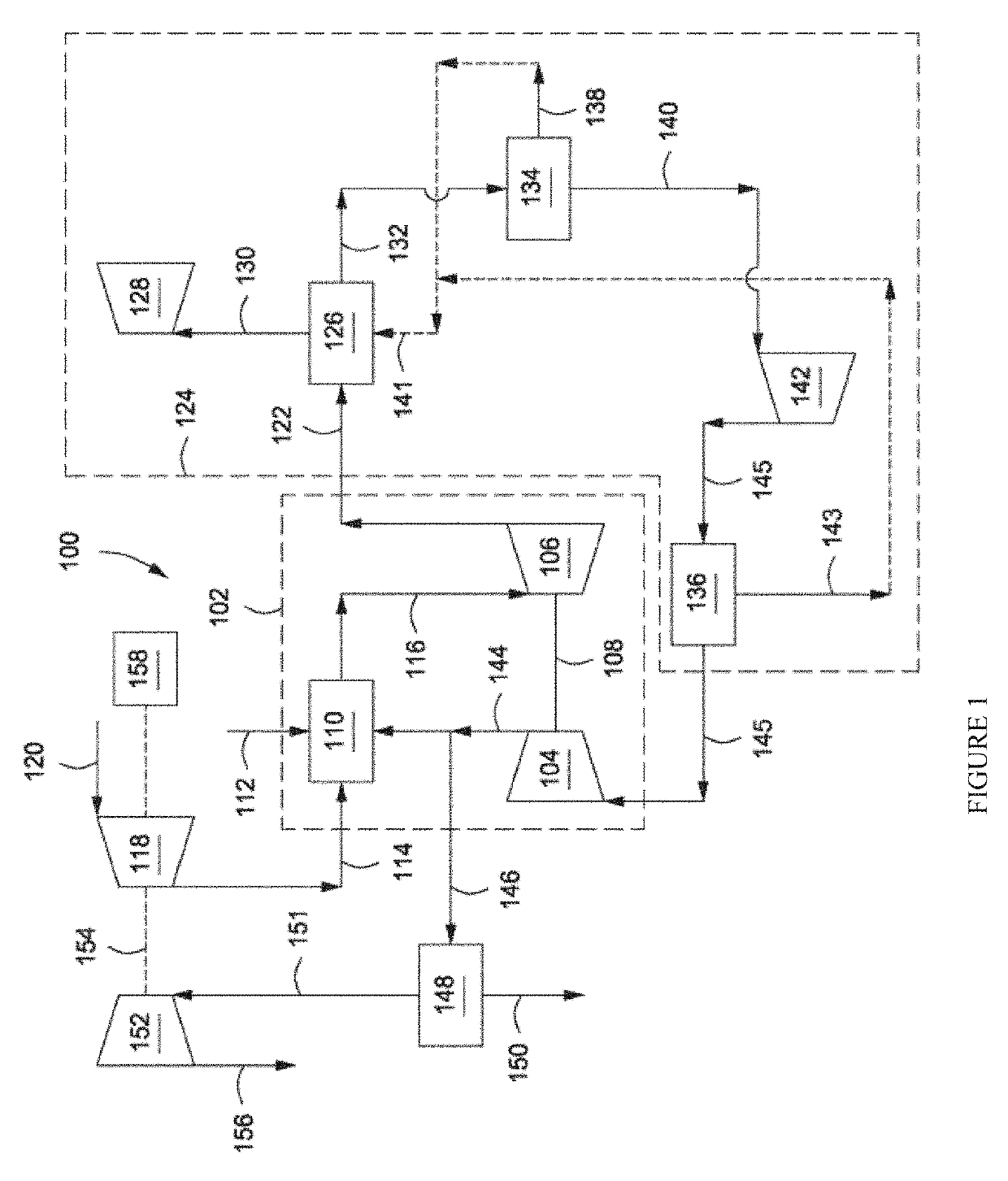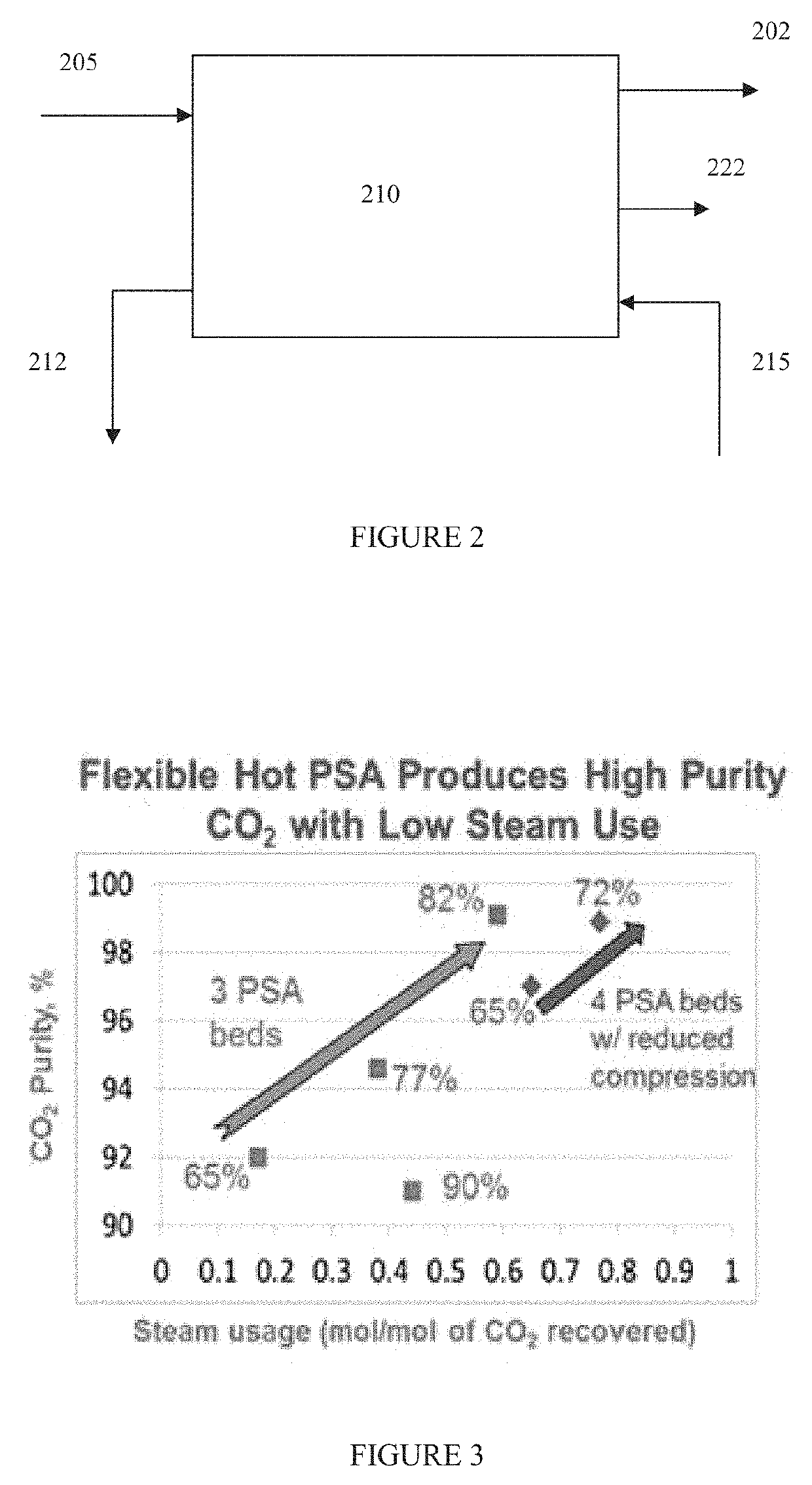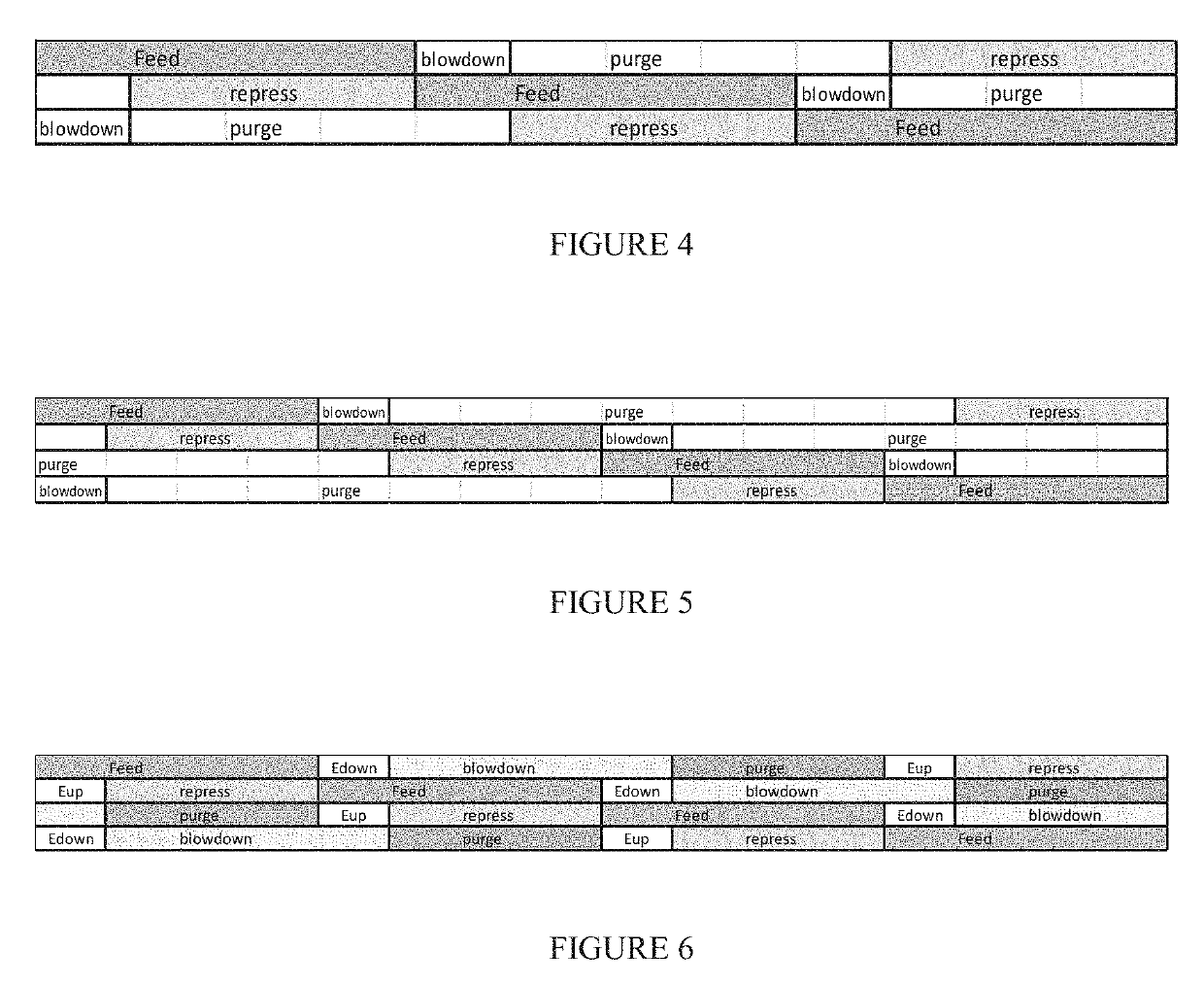Hybrid high-temperature swing adsorption and fuel cell
a high-temperature swing adsorption and fuel cell technology, applied in the field of pressure swing adsorption, can solve the problems of reactant drawing a significant amount of energy, consuming energy in traditional power generation process, and sub>2 /sub>2 in the reaction process, so as to reduce or mitigate the emissions of power generation, reduce/minimize the energy required for separation, and high purity
- Summary
- Abstract
- Description
- Claims
- Application Information
AI Technical Summary
Benefits of technology
Problems solved by technology
Method used
Image
Examples
example 1
g PSA on a Portion of Recycled Exhaust
[0085]FIG. 3 shows how the recovery (represented as a molar ratio) and purity (represented as a percent) trade off against steam usage for exemplary PSA configurations that can further illustrate the invention. For each of the cases shown, the feed composition and pressure are similar to those described in the examples above. In FIG. 3, either ˜3-vessel or ˜4-vessel PSA configurations are illustrated for typical adsorbent properties of mass transfer and adsorbent capacity. As seen in FIG. 3, higher purity CO2 (>95 vol %) can be achievable with increased steam usage, but still less than ˜1.0 mol / mol of CO2 recovered. In addition, the use of ˜4 PSA vessels can allow a reduced pressure swing via the use of a higher relative purge pressure (>about 1.35-1.5 bara, typically from ˜2 bara to ˜3 bara), which can reduce both equipment and energy requirements for subsequent CO2 compression prior to use in EOR facilities. Further improvement of the ˜4-vesse...
example 2
PSA Configuration Using a Portion of Recycled Exhaust
[0086]FIG. 4 shows a 3-vessel configuration that is illustrative but not limiting of one possible arrangement of adsorber vessels within the scope of the invention. In this configuration, one vessel is on feed and hence making nitrogen product at all times. The other two vessels can be undergoing other steps of the cycle, e.g., that regenerate the adsorbent, whilst the first vessel is making product at relatively high pressure. In this particular 3-vessel arrangement, there is no fluid connection (i.e., exchange of gas streams) between the vessels, which reduces cycle complexity as well as equipment such as interconnecting piping and valving.
example 3
PSA Configuration Using a Portion of Recycled Exhaust
[0087]FIGS. 5-6 show 4-vessel configurations that are illustrative but not limiting of another possible arrangement of adsorber vessels within the scope of the invention. In the configurations of FIGS. 5-6, at least one vessel is on feed at all times. Two or three of the other vessels can be undergoing other steps of the cycle, e.g., that regenerate the adsorbent, whilst the at least one vessel is making product at relatively high pressure. In the particular 4-vessel arrangement of FIG. 5, there is no fluid connection (i.e., exchange of gas streams) between the vessels, which reduces cycle complexity as well as equipment such as interconnecting piping and valving. However 4-vessel arrangements permit cycles to be conducted whereby two of the vessels not on feed can exchange gas, e.g., by employing a pressure equalization step whereby a first vessel at relatively higher pressure can be depressurized into a second vessel at relative...
PUM
 Login to View More
Login to View More Abstract
Description
Claims
Application Information
 Login to View More
Login to View More - R&D Engineer
- R&D Manager
- IP Professional
- Industry Leading Data Capabilities
- Powerful AI technology
- Patent DNA Extraction
Browse by: Latest US Patents, China's latest patents, Technical Efficacy Thesaurus, Application Domain, Technology Topic, Popular Technical Reports.
© 2024 PatSnap. All rights reserved.Legal|Privacy policy|Modern Slavery Act Transparency Statement|Sitemap|About US| Contact US: help@patsnap.com










